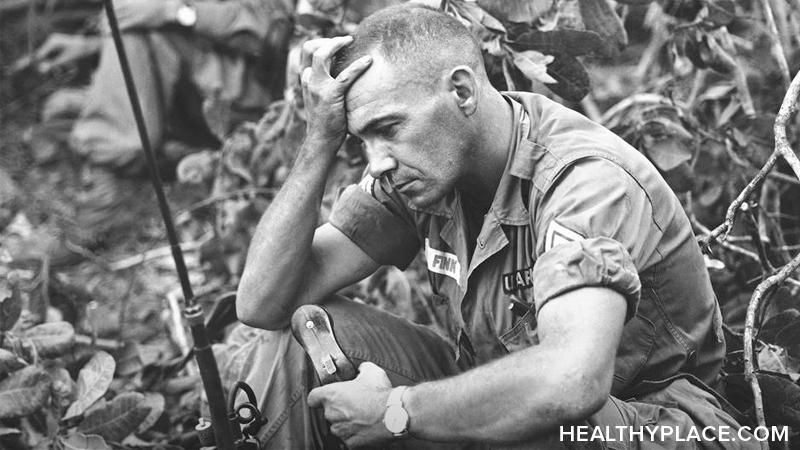Vietnam Veterans Still Living with PTSD 40+ Years Later

While most veterans of the Vietnam War do not currently have posttraumatic stress disorder (PTSD), a significant number do have Vietnam-related PTSD and a shockingly high percentage of Vietnam veterans suffer from some PTSD symptoms (PTSD: A Big Problem for Military Soldiers in War Zones). The basis for these and other facts is the National Vietnam Veterans’ Readjustment Study (NVVRS) conducted after a congressional mandate made in 1983.
PTSD and Vietnam Veterans – The Numbers
Vietnam War veterans who saw action had the highest rates of PTSD when compared to Vietnam-era veterans and civilians. Numbers vary on exactly how many veterans had symptoms of PTSD relating to functional impairment at the time of the study. One estimate was that 830,000 (26%) of male and female veterans had impairment in functioning due to PTSD while another, more recent, estimate stated that most Vietnam veterans suffered from chronic PTSD with four-out-of-five reporting recent PTSD symptoms.
The Vietnam War-related PTSD and partial PTSD numbers are:
- Of males, 15.2% met the criteria for current PTSD and 30.9% had PTSD at some point in their lifetime.
- Of females, 8.5% met the criteria for current PTSD and 26.9% had PTSD at some point in their lifetime.
- Of males, 11.1% currently suffered from partial PTSD and 22.5% had suffered from partial PTSD at some point in their lifetime.
- Of females, 7.8% currently suffered from partial PTSD and 21.2% had suffered from partial PTSD at some point in their lifetime.
More PTSD Statistics and Facts
Risk Factors for Vietnam PTSD
As with other groups of veterans, the more exposure to war and the greater the severity of the trauma, the greater the risk of PTSD. Other military factors that increase the risk of PTSD include:
- Depression
- Immediate dissociation (feeling disconnected from the self or the world) at the time of the trauma
The factors of immediate dissociation and war zone exposure also increase the risk of PTSD symptoms over the longer term (PTSD maintenance) but so does serious injury obtained during the war.
There are pre-military life factors that can increase the risk of PTSD in Vietnam veterans and they include:
- Hispanic ethnicity
- Family instability
- Severe punishment during childhood
- Childhood antisocial behavior
- Depression
Post-military factors that can increase PTSD risk include recent stressful life events, depression and post-Vietnam trauma.
Protective Factors for Vietnam War PTSD
While lifestyle factors can increase the risk of PTSD in war, some factors were found to reduce the risk of Vietnam War PTSD. Pre-military protective factors include:
- Japanese-American ethnicity
- High school degree or college education
- Older age at entry to war
- Higher socioeconomic status
- More positive paternal relationship
Post-military protective factors include social support at homecoming and current social support (PTSD Help: PTSD Support Groups Can Help PTSD Recovery).
Unfortunately, there were no factors present during the Vietnam War that were found to decrease the risk of PTSD.
What We Can Learn from Vietnam Veterans Who Have PTSD
This study represents, arguably, the most representative group of Vietnam Veterans ever studied and so its findings are highly relevant. What’s clear is that some factors can prevent the presence and maintenance of PTSD while others can help protect a person from it. Perhaps the most useful thing we can learn is how important support is in helping someone experiencing PTSD or in preventing someone from developing PTSD. The National Center for Posttraumatic Stress Disorder (PTSD) online, available to both military and non-military PTSD patients and doctors, is a great place to start learning how to help yourself or someone you love.
APA Reference
Tracy, N.
(2020, December 26). Vietnam Veterans Still Living with PTSD 40+ Years Later, HealthyPlace. Retrieved
on 2025, November 20 from https://www.healthyplace.com/ptsd-and-stress-disorders/ptsd/vietnam-veterans-still-living-with-ptsd-40-years-later


